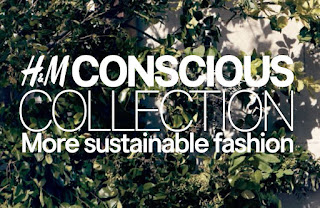Are reselling apps actually sustainable?
Reselling apps have gained a lot of popularity in the last few years. Instead of donating your clothes to thrift stores or taking them into a consignment store to get $10 back, you can sell your clothes yourself and buy other used clothes for great prices. What’s not to love about that?
With concern over sustainable shopping, it begs the question of whether or not reselling apps are a viable option. On the surface, they seem as though they’re a great option for buying clothes second hand. However, how sustainable is this kind of shopping and the companies that created it?
RESELLING APPS
There’s a few different reselling sites I want to focus on in this analysis. First, we have Depop, founded in 2011, Poshmark, founded in 2011, and ThredUp, founded in 2009.
Depop and Poshmark are both app-based shopping sites that allow users to create listings of their unwanted clothing to ship around the world. It resembles a social media site, which creates this cool sense of community for the users. While most use it to sell their clothes, some users actually use Depop and Poshmark as store fronts to sell their own products.
ThredUp differs from these apps a bit differently. While Depop and Poshmark are reselling sites, ThredUp is known as an online consignment and thrift store. ThredUp is consignment based, meaning that you send the clothes to the company, they go through them, and pay you for what they put on their site.
Something that concerns me when shopping from these sites is the carbon footprint that comes from shipping clothing worldwide. The amount of carbon emissions from trucks and planes shipping clothes to your doorstep is no doubt huge and is causing harm to the environment. Learning how these companies plan to combat this is extremely important to me and others who are making the effort to be more sustainable.
Let’s look into how sustainable these companies and their practices actually are.
DEPOP
Depop has made their plans for sustainability clear to the public. In an interview with The Challenger Project in 2019, founder Simon Beckerman made it clear that sustainability is a necessity to the company and shared plans for more sustainable practices. They created a two year plan in 2020 with multiple goals, which you can read here.
In terms of reaching these goals, Depop was certified climate neutral by South Pole at the end of last year, meaning that they’ve offset their material sources of greenhouse gas emissions. They’ve done this through projects that prevent deforestation and reduce the need for fossil fuels (you can read more on this at Green Queen). This is major for a company based on online shopping, and yet they still want to do more. Depop has plans to become net zero emissions on their entire supply chain. Though a timeline isn’t given, it’s clear that Depop has taken the steps to be sustainable and reduce their impact on the environment, which gets an A+ from me.
POSHMARK
As far as I can tell, Poshmark has made no comments or efforts on the sustainability of their company.
They highlight how their app promotes circular fashion and how shopping from them is more sustainable than buying retail in an Earth Day post from 2021. While these two facts are incredibly important, it doesn’t highlight the efforts the company itself is taking to be more sustainable.
Other than that post and an interview with Cheddar about how sustainability is changing the fashion industry, Poshmark doesn’t disclose any other information. This is definitely something to take into consideration next time you’re deciding whether or not to use Poshmark.
thredUpTHREDUP
ThredUp has a beautiful website describing their plans for sustainability. It educates customers on what’s going on in the fashion industry, along with their own impact in the realm of sustainability. ThredUp also created the first Fashion Footprint Calculator, which helps you figure out what your footprint is from your shopping habits (mine is medium/low!).
Unfortunately, I also couldn’t find out any information about ThredUp’s carbon footprint when it comes to shipping or if they were carbon neutral/have plans to become carbon neutral. Yes, buying used clothes reduces your carbon footprint, but what about shipping them?
THE TAKEAWAY
Some reselling sites have done amazing things in the world of sustainability. Depop and ThredUp have shown actual work in reducing the impact fashion has on the environment, making them solid choices to buy used clothing online (Poshmark, not so much).
There’s still a long way to go for all of these companies, but they’ve taken the first steps towards sustainability, which can make us feel more comfortable shopping from their sites.





Comments
Post a Comment